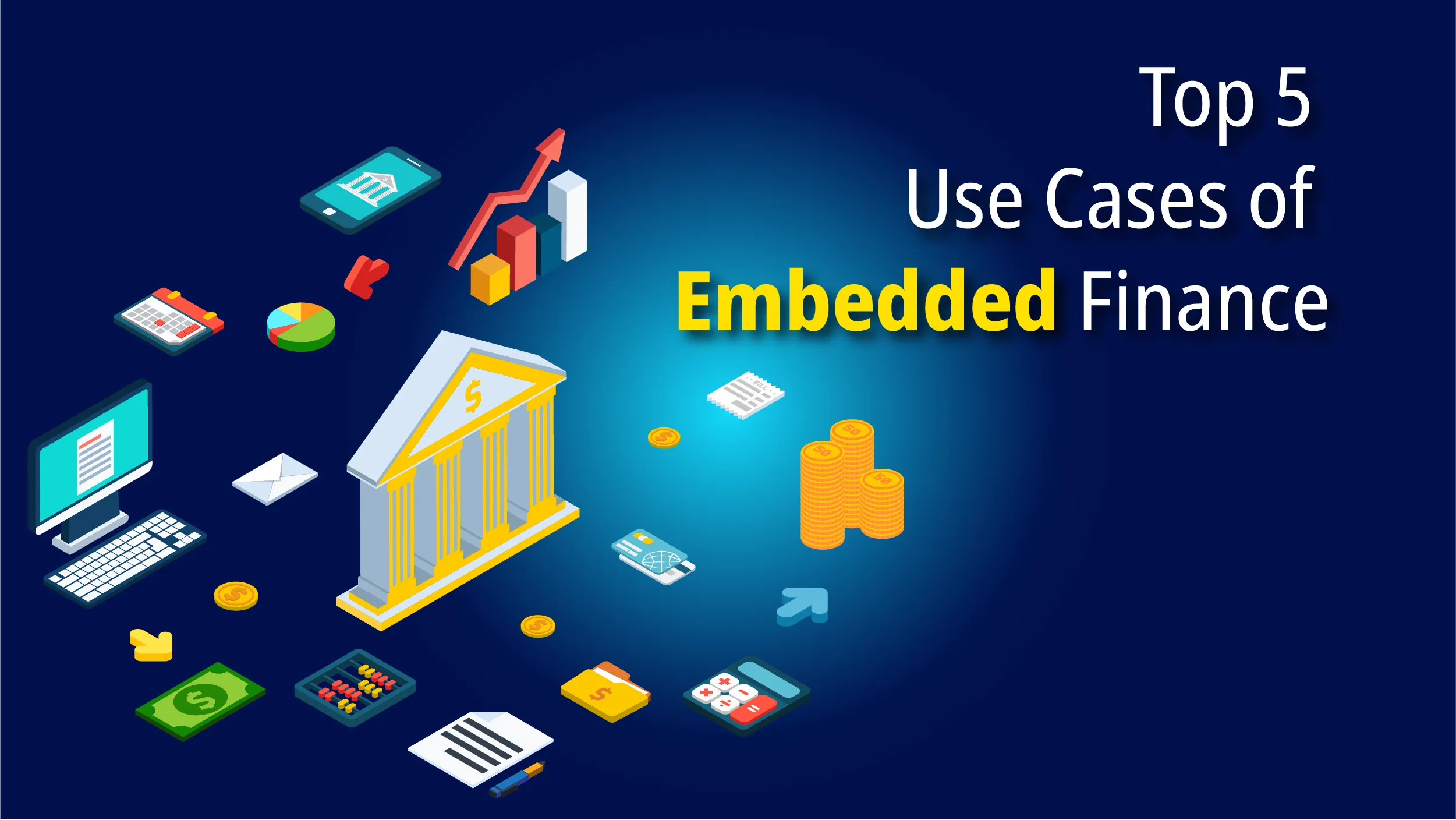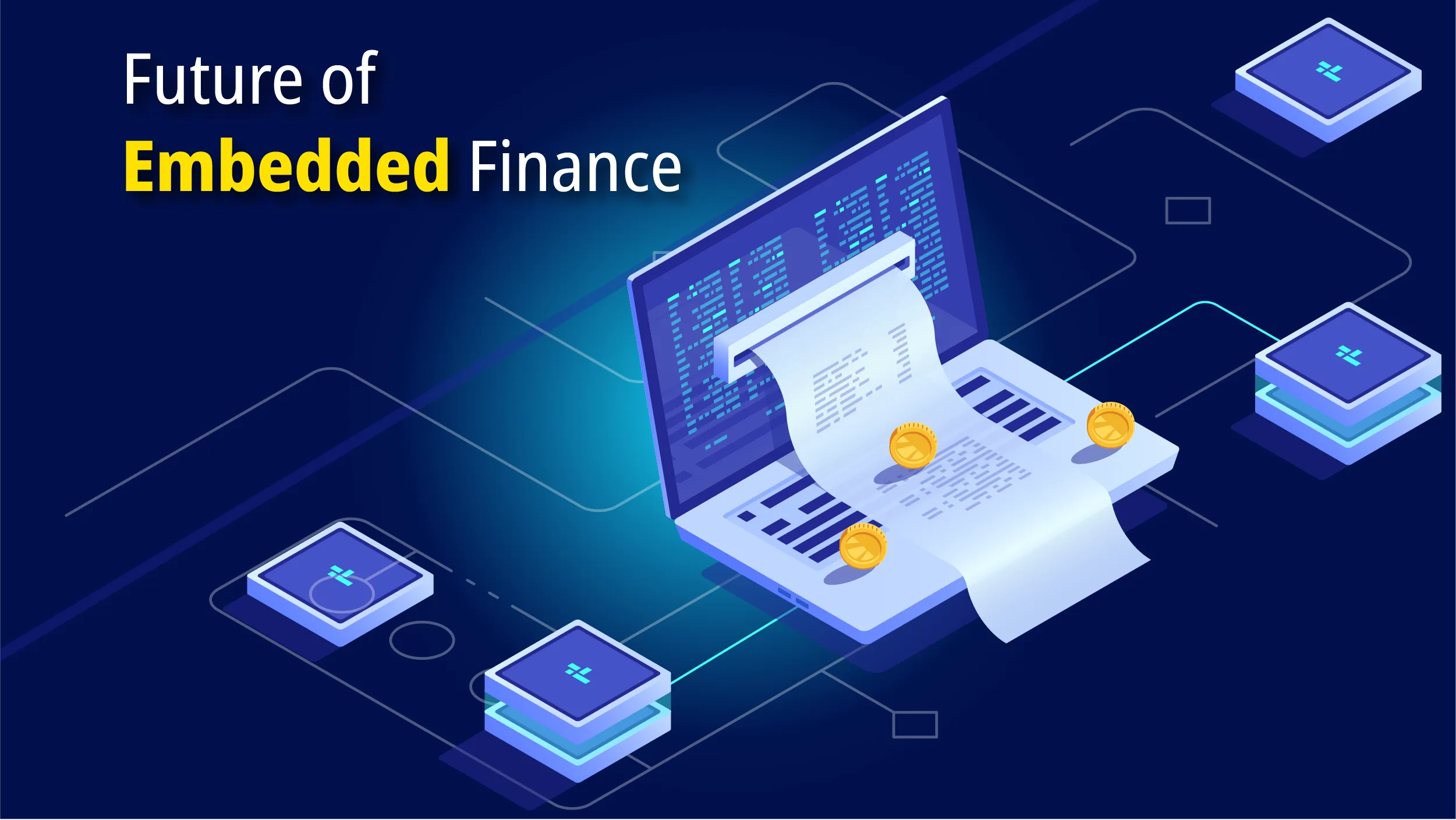Embedded finance is quickly being adopted by businesses worldwide. One aspect of such financing is “buy now pay later” option which customers favor. Conventional financial services have drawn-out paperwork, difficult procedures, and restricted accessibility. These obstacles make it more difficult for people and companies to carry out transactions, manage their money wisely, or access necessary financial services. In addition, it has always taken a lot of effort and money to integrate financial services into non-financial platforms. Embedded finance transforms how we engage with them by smoothly integrating financial services into routine tasks and platforms. This article discusses everything you need to know about this niche.
What Is Embedded Finance?
Embedded finance means financial services such as payments, lending, insurance, and more are integrated into non-financial businesses or platforms without the need to redirect to traditional financial institutions. It allows businesses to offer customized financial products and services within their existing platforms to enhance the customer experience and streamline financial transactions. The concept of embedded finance is not new; non-banks have been offering financial services through private-label credit cards or sales financing for decades.
But what’s new is the technology and the ease of integration into digital interfaces like apps, digital wallets, and rewards programs. By embedding finance, businesses can offer customers convenient access to financial services without having to rely on traditional banks. For example, e-commerce platforms can offer instant financing at the point of purchase, so customers can buy without needing external financing. Similarly, SaaS companies can integrate invoicing or payment processing into their platforms to simplify financial management for businesses.
Also Read: Predictive Analytics In Banking: What it is & Why it Matters?
Top 5 Use Cases of Embedded Finance

Digital Wallets
The development of digital wallets is among embedded financing’s most practical features. These easy-to-use smartphone apps securely keep digital copies of your debit and credit cards, protecting your real account numbers and other private data. In this area, mobile payment options like Google Pay, Apple Pay, and Samsung Pay have set the standard by enabling users to only hold up their phones to contactless terminals at ATMs and retail checkout lines. Additionally, using a digital wallet to make payments instead of entering your credit card information when buying online further streamlines and secures the transaction.
Oil and Gas Industry
Every stage of the oil and gas business requires specialized personnel and equipment. Heat exchangers, drill bits, pipes, and other items may now be compared on marketplaces that serve the specific and varied demands of this sector. Through their own networks or Google, buyers and suppliers discover suppliers and clients they never would have known about.
Construction Sector
Like oil and gas, the construction industry has very specific needs. For example, finding a replacement part for a specific make and model of an excavator can be hard, even with Google. B2B marketplaces for construction make it easy, with more choices for buyers and opportunities for suppliers.
Insurance
By streamlining the administration of insurance options, processing of claims, and payment processing for both insurance firms and clients, these financing solutions are transforming the insurance sector. Automation reduces human operations and offers clients a variety of easy ways to pay their premiums, coinsurance, or deductibles. In the end, embedded finance improves customer satisfaction and operational effectiveness.
Grocery and Food Service
You’ve probably dealt with grocery shop-embedded finance if you’ve ever bought groceries for pickup or delivery and paid for them through the app or website. You’ve also probably paid for a meal at a restaurant by using a credit card. Currently, the B2B segment of the food and beverage industry is seeing an increase in this particular trend.
There are growing numbers of food and beverage marketplaces. Many of them are not only eateries or grocery stores. But also includes fruits and vegetables, packaged food, organic food, and wholesale food. Grocers and restaurateurs have the most options and flexibility when it comes to the food they can stock on their shelves or serve on their menus thanks to niche markets.
Healthcare
With so many individuals in the US having to pay for their own medical care, embedded finance has great potential in the healthcare industry. With an average cost per person of $13,493, U.S. healthcare spending surpassed $4.5 trillion in 2022. Patients may now effortlessly pay their medical bills using desktop and mobile apps, thanks to the payment services and other financial solutions offered by major hospitals and health systems, including embedded loans.
Imagine helping patients plan and budget by providing them with upfront pricing information for preventive care. Several intriguing new companies are also joining the market, such as the fintech firm PayZen, which offers patients no-interest, no-fee payment plans while paying hospital bills upfront. Such innovations could result in cost savings for health insurance companies as well as physicians, patients, and hospitals.
Future of Embedded Finance

Embedded finance is being hailed as the future of the fintech industry. It’s all about bringing together non-financial service providers, like retailers or ride-sharing companies, with financial services such as payment processing, lending, or insurance. The idea is to seamlessly integrate these financial services into existing platforms, offering a bunch of advantages and potentially changing the whole financial landscape.
One of the main reasons is its ability to improve customer experiences and engagement. By directly incorporating financial services into non-financial platforms, businesses can provide a smooth and convenient user experience. This means customers don’t have to jump between different platforms or institutions for their financial needs, making everything more efficient and user-friendly.
Not only that, but embedded finance also opens up new ways for businesses to make money. By adding financial services to their platforms, companies can generate extra income through transaction fees, interest charges, and other financial products. This diversification of revenue sources can really help businesses grow and stay sustainable in the long run.




